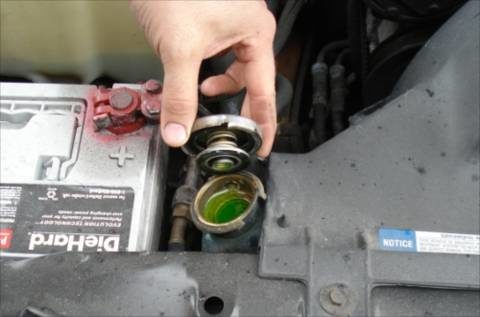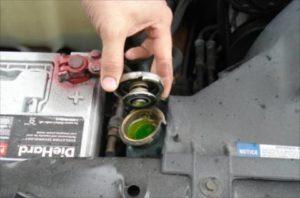Water cooling (Of liquid cooling) for combustion engines
With water cooling, cooling water is pumped past the object to be cooled. Due to the large heat absorption of water, water cooling is usually more effective than air coolingwherein the air flows directly over the surface to be cooled. The coolant loses its heat through the radiator whereby the heat is released to the air over a large area. Then the cycle starts again.
Water cooling is complicated
The disadvantage of water cooling compared to air cooling is that a much larger, heavier and more complicated installation is required for water cooling, where a fan (forced air cooling) is already quite a feat with air cooling. In addition, there is a risk of short circuits in the vicinity of electrical components. The water jacket provides additional insulation, making water-cooled motors quieter than air-cooled (but also heavier).
Closed systems that cannot be serviced, such as the cooling system of an internal combustion engine, generally use a special coolant to combat limescale, foaming and corrosion and to lubricate moving parts such as the coolant pump and thermostat. In some branches of car and motor sports, the use of (demineralised or not) water is actually mandatory, because leakage occurs more often in the heat of the battle, thus protecting the environment.
But now it's cold.
And 'cooling water' can freeze. A case that plays less for Maserati lovers than for the brave Volvo 240 driver that I see every day, but still.
And we have antifreeze for that. Antifreeze lowers the freezing point of the coolant (and usually also causes the boiling point to be higher). The main antifreeze types are ethylene glycol, formerly ethylene glycol, glycerol, methanol and propylene glycol.
Coolant is a ready-made product. Antifreeze is an addition.
Both coolant and antifreeze owe their cold protection to ethylene glycol. However, the application differs. Coolant is a ready-made product that is used undiluted and has been specially developed for engine block cooling. Antifreeze is cheaper, needs to be diluted, but can cause corrosion. A good quality coolant provides frost protection up to -40 ° C. The cheaper types go less far, but are usually sufficient for Benelux use. In all cases, the manufacturer has added anti-corrosion agents - so-called inhibitors - that neutralize aggressiveness. After such an 2 à 3 year, these become exhausted and the coolant must be replaced. The much cheaper antifreeze must itself be diluted with water. The amount added determines the degree of frost resistance:
| Cold protection to |
Mixing ratio water / antifreeze |
| -10ºC -20ºC -30ºC -40ºC |
80 / 20 66 / 34 56 / 44 49 / 51 |
Do not simply drain old coolant when draining. The sweetness factor of ge glycol makes it a top favorite drink of cats and dogs and other hairy and winged things. And they will break.






